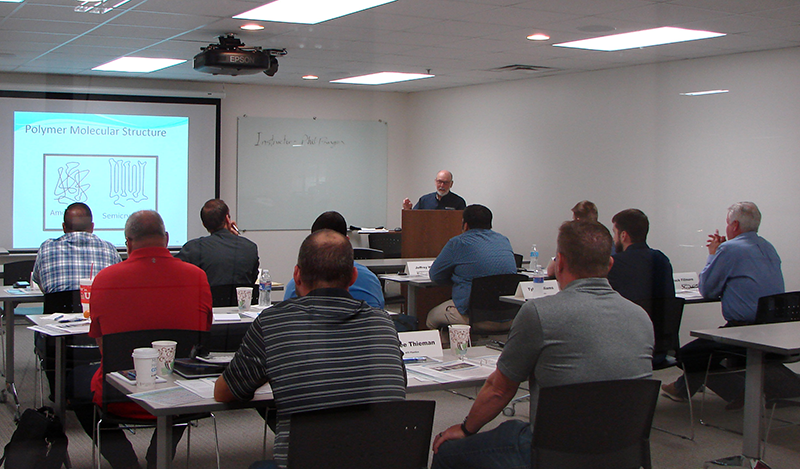Reynolds number (Re) is a dimensionless quantity used to predict fluid flow patterns. Osborne Reynolds (1842-1912) popularized the use of this predictive method in the late 1800’s and the quantity was named after Mr. Reynolds. Reynolds number is the ratio of momentum to viscous forces in a moving fluid and quantifies the relative influence of these factors for various flow conditions. At low Reynolds numbers viscous forces dominate and flow is laminar, characterized by smooth flow without internal mixing. At high Reynolds numbers the inertia property of the fluid becomes the dominant factor and flow becomes turbulent, with chaotic eddies, vortices and significant internal mixing.
For flow in a pipe the simplified mathematical expression for Reynolds number is:
Re = (Velocity x Diameter) ÷ Kinematic Viscosity = (V x D)/γ
Velocity = Speed of fluid in the pipe
Diameter = the inside diameter of the flow passage
Kinematic Viscosity, γ = A property that quantifies the degree of resistance to flow—for example honey has a high viscosity value and water has a much lower value. It is important to note that viscosity of a substance typically decreases as its temperature increases, including water!
In injection molding cooling is typically achieved by circulating a temperature- controlled fluid, usually water, in drilled or machined passages inside the mold. Molders have learned that superior cooling is achieved when flow is turbulent. Thus Reynolds number has become an important and widely used predictive tool for improving the quality of mold cooling. Engineering handbooks typically indicate that flow is likely to be turbulent for Reynolds numbers above 4000. But it should be noted that the transition from laminar flow to turbulent flow is also dependent on other factors such as the geometry and roughness inside the flow passages. It is a good practice in mold cooling to apply a safety factor to ensure that turbulence is well established. A factor of 1.5-2.0 is suggested based on our research. Increasing flow to gain significantly higher Reynolds number values yields diminishing cooling benefits while using more energy.
The Smartflow® Turbulent Flow Rate Calculator is provided as a service to the injection molding community as an easy-to-use online resource. In the development of our calculator special attention was focused on being capable of calculating values at elevated water temperatures. This functionality will be very useful to our industry given the rapidly growing use of pressurized mold temperature controllers, operating at temperatures up to 350°C (662°F).
Ethylene Glycol is a compound commonly used as an additive to water in a cooling system to reduce the freezing temperature of the solution and thus allow circulation of a lower temperature coolant. We have modified our Reynolds Number Calculator to allow users to select a percentage of Ethylene Glycol and a water temperature and calculate Reynolds Numbers and required flow rates based on these selections. It will be apparent when you use the calculator that lower temperatures and higher Ethylene Glycol concentrations require a significantly higher flow rate to achieve a given Reynolds Number. This is due to the physical property of these liquids to become more viscous as temperature decreases.
Our calculator uses viscosity data published in the Dow® “Engineering and Operating Guide” for DOWTHERM® 4000 Ethylene Glycol. This Dow® booklet may be downloaded in pdf format:
Click here to download.
We encourage users to review and employ the recommendations in the Dow® Guide. Important highlights of the content are:
- Dowtherm® heat transfer fluids contain corrosion inhibitors.
- Recommended concentrations of Ethylene-Glycol range from 25%-60%. Concentrations below 25% may render the inhibitors ineffective. Above 60% concentration the viscosity of the coolant solution is so high as to interfere with efficient heat transfer.
- Above 150°F, 66°C use of Ethylene Glycol with aluminum or zinc plated system components is not recommended due to corrosion risks.
- Above 150°F, 66°C the system must be closed to avoid rapid oxidation of the Ethylene Glycol, depletion of corrosion inhibitors, and increased corrosion of system components.


